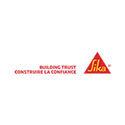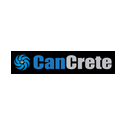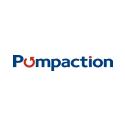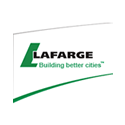FAQ
- What is the history of Shotcrete?
- What can Shotcrete be used for?
- What are the advantages of using Shotcrete?
- What is Mix Design?
- What is Shotcrete?
Shotcrete technology has come a long way since its origins in the early 1900s. The first tool created to apply cement and other material pneumatically was the “Cement Gun” invented by Carl E. Akeley, and patented in 1911. Developments in the cement industry along with the creation of the cement gun quickly made way for the creation of a process called “gunnite” (a term previously used to describe the dry-mix process). The construction industry quickly caught on recognizing the value of gunnite technology. By 1915 the Cement Gun Company was well established and the gunnite process was being used for a wide variety of applications such as construction and repair of buildings, bridges and sewer tunnels.
By the late 1950s machinery innovations such as the invention of the jetcreter and then the rotor style gun enhanced the delivery of shotcrete. By that time approximately 5000 machines were being used in over 120 countries. The development of the swingtube concrete pump and introduction of the wet-mix process in addition to enhanced concrete technology (i.e. chemical admixtures and cementing additives) continued to enhance shotcrete use through the 1960s and 70s.
Tools for formal certification and education of shotcrete nozzlemen were developed through the 1990s in the United States. In 1991 the American Concrete Institute published certification guidelines for shotcrete nozzlemen which was used initially as a guide without an official certification program. In the late 1990s a group of contractors, suppliers and others relevant to the industry came together to form the American Shotcrete Association. The ASA and the ACI worked together to establish a shotcrete nozzlemen certification program which rolled out officially in 2001.
Through continuous advancements in equipment and concrete technology, proper understanding and usage of mix design, and an emphasis on education quality control, shotcrete has become widely recognized in the construction industry.
Shotcrete can be used for many applications including…
- Soil Retention
- Retaining Walls
- Shafts
- Tunnel Lining
- Artistic and Architectural finishings
- Highway Culvert Lining
- Sewage Treatment Plant Rehabilitation
- Storm Sewer Relining
- Soil Nailing
- Commercial and Residential Swimming Pools
- Underpinning
For more information please refer to our Services page
There are many advantages of using Shotcrete:
- Cost effective
- Fast setting
- Infinite shape/design options
- Need for formwork is greatly reduced and often eliminated (cost savings of labor and material)
- Low permeability and excellent bond characteristics
- Can be used in spaces where there is limited access
- Can be applied to a wide variety of surfaces
- Can be applied vertically or horizontally
- Can be applied thick or thin and in multiple layers
- Dry-mix eliminates reliance on batching plant and concrete trucks
- Wide variety of finishes
Mix design is the customization of concrete material and is dependent on specific requirements of a project. Both project engineers and shotcrete contractors must have a solid understanding of mix design and admixtures in order to determine what will achieve a desired end result.
An admixture, as defined by the American Concrete Institute, is a “material other than water, aggregates, hydraulic cement, and fibre reinforcement used as an ingredient of concrete or mortar, and added to the batch immediately before or during its mixing”. Admixtures are typically water-soluble substances used to enhance the properties of concrete or mortar in the plastic and hardened state. Both wet and dry-mix shotcrete processes can be enhanced with the addition of admixtures.
Benefits include:
- Increased compressive and flexural strength at all ages
- Decreased permeability and improved durability
- Corrosion reduction
- Initial set adjustments
- Increased slump and workability
- Improved pumpability
- Finish and finishability
Some commonly used admixture ingredients and their uses include the following:
- Silica Fume: reduced permeability; increased compressive and flexural strength; increased abrasion resistance; increased resistance to chemical attacks; increased strength through improved bonding; reduced expansion of concrete; electrical resistivity; allows for thicker single pass applications.
- Fly ash: improves pumpability and workability of wet-mix shotcrete; reduces heat of hydration; improves sulfate resistance; controls alkali-agregate reactions.
- Air-Entraining materials: improve pumpability and adhesion in wet-mix process; improves freeze-thaw durability in both wet and dry processes.
- Fibres: control cracking, increase toughness values; improve impact resistance and energy absorption.
- Accelerators: improve placement characteristics in adverse conditions; allow for thicker single pass applications; increase production capabilities and reduce the occurrence of fallouts on structures subjected to vibration.
- Plasticizers (and Super Plasticizers): increase slump of concrete; reduce water requirement of concrete mix; allow a given strength with a lower cement content; may improve pumpability.
- Retarders: prevent cold joints due to duration of placing; maintain quality of concrete when it must be transported for a long time.
Shotcrete is defined in the American Concrete Institute’s, “Guide to Shotcrete”, as the “process of mortar or concrete pneumatically projected at high velocity onto a surface”. Shotcrete is a method of delivery. The application of shotcrete can be performed using either the “Dry-Mix” (also referred to as gunnite), or “Wet-Mix” process.
The Dry-Mix process requires that all ingredients are pre-mixed except for water. The dry mixture is fed into a shotcrete gun and compressed air carries it through the delivery hose. Water is introduced under pressure through a water ring at the nozzle where it is thoroughly mixed with the other ingredients. Compressed air is injected into the nozzle and the mixture is then shot from the nozzle at high velocity onto the receiving surface.
Wet-Mix requires that all ingredients (including water) are pre-mixed at a batching plant. The pre-mixed material is poured from a truck to a hopper on a specially designed concrete pump from which it is delivered into a hose. Compressed air is introduced at the nozzle and the mixture is then shot at high velocity from the nozzle onto the receiving surface.
Depending on the nature of a project either the wet-mix or dry-mix process may be a better fit. Wet-mix works best for larger projects. Having all ingredients pre-mixed and delivered means less steps for the crew on-site. It also ensures very thorough and consistent measuring of the materials being used. Dry-Mix is ideal for smaller projects. It also is the best choice when equipment and materials have to be relocated or transported longer distances and to remote locations. Dry-mix allows more control of material as the mixing happens entirely on site and there is no restriction as there is with delivered concrete.
At Hardrock Concrete we have the knowledge, experience and equipment to offer both wet and dry-mix shotcrete services. We work closely with our clients to ensure high standards in either process are met and take necessary steps to maintain safety and quality control. Every project is unique. We take care to create and deliver a mix design that results in an excellent finished product.














